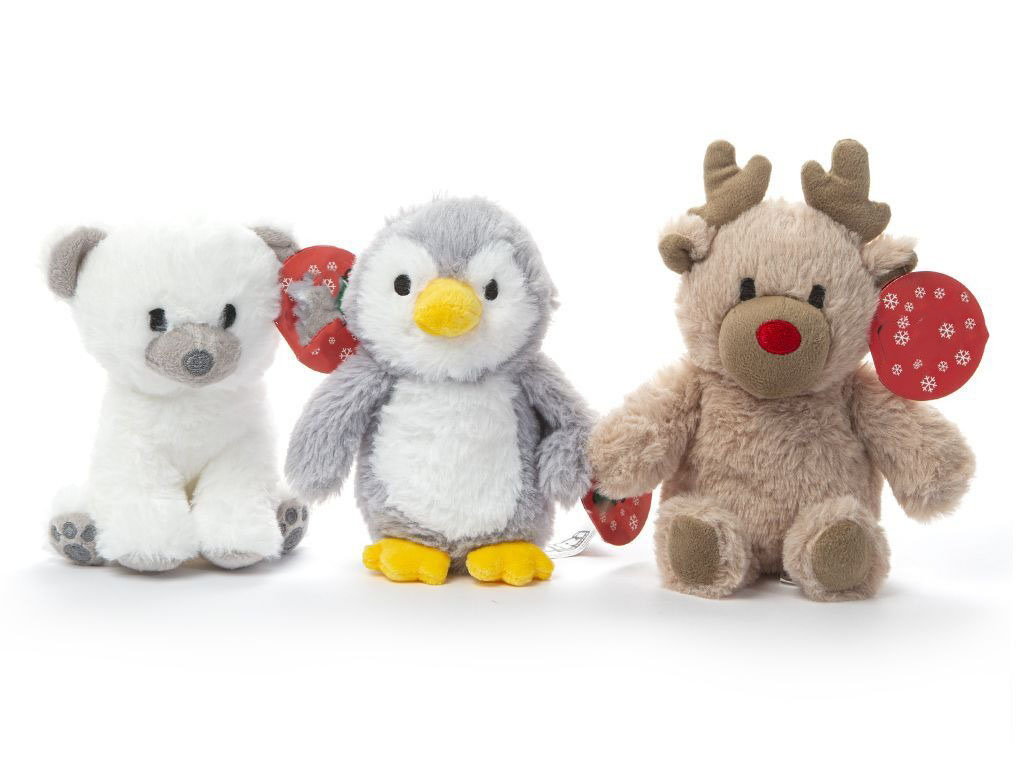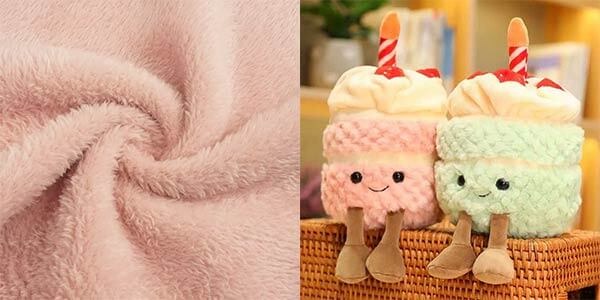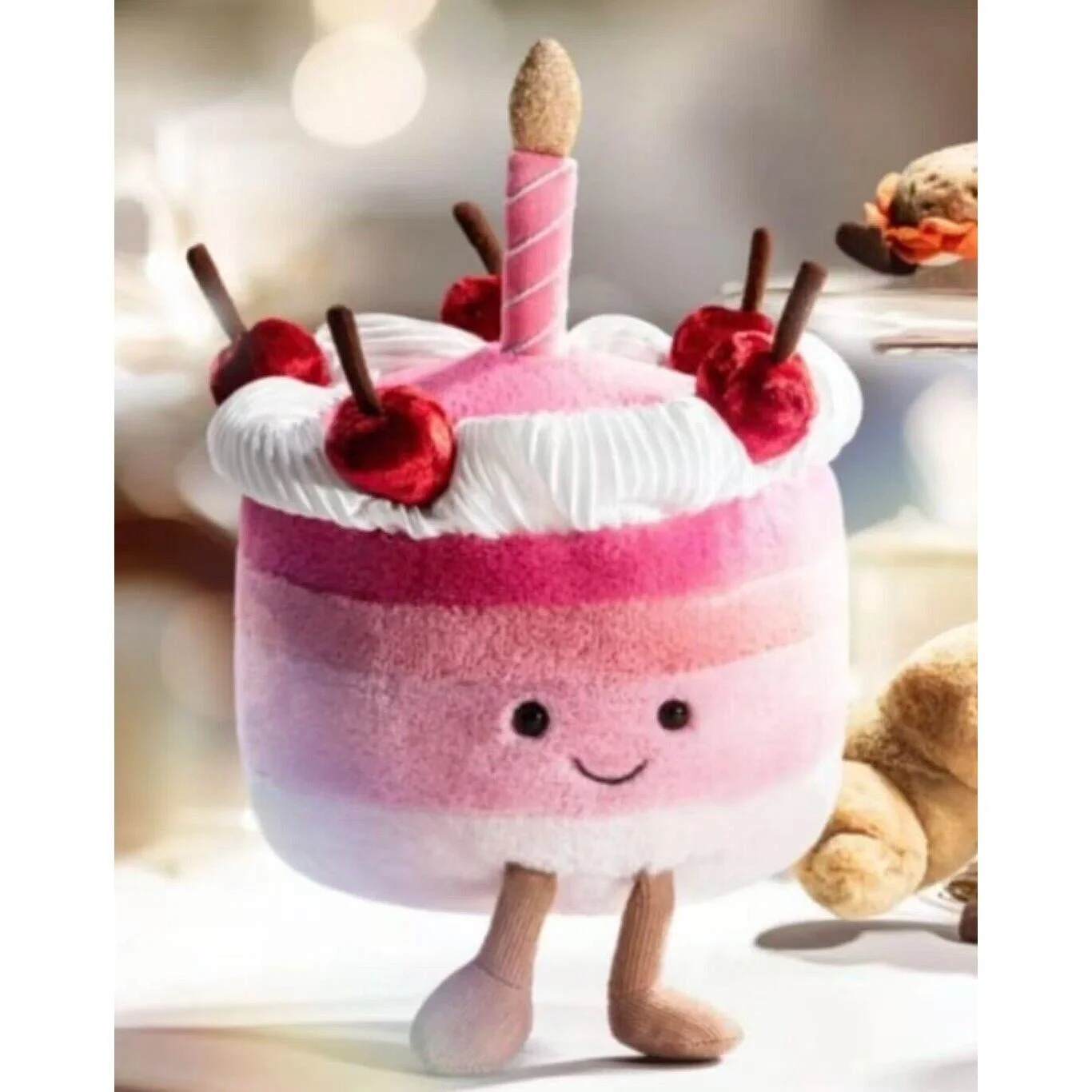Plush dolls have become a beloved companion for both children and collectors alike, providing comfort, entertainment, and even emotional support. These soft, huggable figures are not just toys but also cherished mementos, sometimes holding sentimental value passed down through generations. But what exactly defines a plush doll, and what sets it apart from other types of toys?
A plush doll is a soft, stuffed toy typically made from fabric and filled with soft materials like polyester fiberfill. It serves both as a comfort item and as a collector’s piece, offering a range of designs and functionalities for various age groups.
In this guide, we will explore the origin, materials, production processes, benefits, and care of plush dolls. Whether you’re a parent looking for the perfect companion for your child or a collector seeking to expand your collection, this article will answer all your questions about plush dolls.
1. What is a Plush Doll and How is it Different from Other Toys?

A plush doll is a soft, stuffed toy that typically features a character or creature, designed to be cuddled or carried around. Unlike plastic or wooden toys, plush dolls are made from fabric and filled with soft, malleable stuffing, such as polyester fiberfill, making them comforting to hold.
Plush dolls are soft, stuffed toys made from fabric and filled with soft materials. They are distinct from hard toys due to their plush texture, designed for comfort and emotional connection.
- Origins and Evolution: Plush dolls have evolved over time from simple rag dolls to highly detailed characters. They first became popular in the 19th century and have grown into multi-billion-dollar industries, with licensed characters and custom designs leading the market.
- Differences with Other Toys: While toys like action figures or dolls made of hard plastic serve more interactive roles, plush dolls are often used for comfort, nurturing play, and as companions. Their softness makes them more suitable for younger children.
| Type of Toy | Material | Användningsfall |
|---|---|---|
| Plush Doll | Soft fabric, polyester fiberfill | Comfort, nurturing, companionship |
| Plastic Toy | Plastic, vinyl | Interactive play, often with movable parts |
| Wooden Toy | Wood | Educational, decorative, non-stuffed |
2. What Materials are Used to Make Plush Dolls?

Plush dolls are made from various materials that determine their texture, durability, and safety. The outer fabric is often made of soft materials like velvet, fleece, cotton, or synthetic fibers, while the inner filling is generally polyester fiberfill or cotton.
Plush dolls are made from soft fabrics such as cotton and fleece, with polyester fiberfill used as the stuffing to give them a plush, comfortable feel. These materials ensure softness, durability, and safety for children.
- Val av tyg: Plush dolls use a variety of fabrics, including cotton, velvet, and fleece, chosen for their softness, durability, and hypoallergenic properties. These fabrics also help ensure the doll remains soft even after multiple washes.
- Fyllnadsmaterial: The most common filling material is polyester fiberfill due to its lightweight, non-toxic, and hypoallergenic nature. In some high-end dolls, cotton or eco-friendly materials are used as an alternative.
- Säkerhetsfunktioner: Plush dolls often include safety features like non-toxic dyes, embroidered eyes (instead of plastic ones), and secure stitching to reduce choking hazards for young children.
| Material | Användning | Fördelar |
|---|---|---|
| Bomull | Outer fabric | Soft, breathable, and hypoallergenic |
| Polyesterfiberfyllning | Filling material | Lightweight, non-toxic, and easy to wash |
| Fleece | Outer fabric | Soft and warm, often used in winter-themed dolls |
| Eco-Friendly Fill | Alternative filling | Sustainable and biodegradable |
3. How Are Plush Dolls Made?

The process of making a plush doll involves several stages, from design to final stitching. The first step is creating a pattern, followed by cutting the fabric into the right shapes. After sewing the pieces together, the doll is stuffed with fiberfill, ensuring it’s the right size and shape.
Plush dolls are crafted through a multi-step process that includes design, fabric cutting, stitching, and stuffing. Quality control ensures that each doll meets safety and durability standards.
- Design and Pattern Creation: The first step in doll-making is conceptualizing the design, including facial features, clothing, and accessories. A pattern is created to cut the fabric precisely.
- Assembly and Stuffing: After the fabric pieces are sewn together, the doll is turned inside out, and stuffing is added. This process requires careful attention to detail to ensure that the stuffing is evenly distributed and the doll maintains its shape.
- De sista detaljerna: After stuffing, the doll’s final details are added, such as facial features, clothes, and accessories. These are often embroidered or sewn on to ensure durability.
| Steg | Process | Syfte |
|---|---|---|
| Design | Conceptualize and create patterns | To define the doll’s shape and features |
| Assembly & Stuffing | Sew fabric pieces and stuff the doll | Ensure shape, softness, and durability |
| Finalizing | Add details like faces, clothes | Complete the doll and ensure high quality |
4. What Makes Plush Dolls Safe for Children?

Safety is a top priority in plush doll manufacturing. From non-toxic fabrics and stuffing materials to secure stitching, manufacturers ensure that plush dolls meet stringent safety standards, including being free from harmful chemicals.
Plush dolls are designed with child safety in mind, using non-toxic materials, secure stitching, and safety-compliant accessories to minimize risks for young users.
- Icke-toxiska material: All materials used in plush dolls, from fabric to stuffing, must meet safety regulations set by various health authorities. Non-toxic dyes and hypoallergenic stuffing ensure that the dolls are safe for children to interact with.
- Safety Standards and Certifications: Plush dolls are often certified by organizations such as the ASTM (American Society for Testing and Materials) or CE marking in Europe, ensuring they meet child safety standards.
| Säkerhetsfunktion | Beskrivning | Syfte |
|---|---|---|
| Non-toxic Dye | Used in fabric and accessories | To avoid exposure to harmful chemicals |
| Hypoallergenic Stuffing | Polyester fiberfill or cotton | Safe for sensitive skin |
| CE & ASTM Certified | Safety certifications | Ensures the doll meets safety standards |
5. How to Choose the Right Plush Doll for Different Age Groups?

Choosing the right plush doll depends on the age of the child, their developmental stage, and specific safety concerns. For infants, a soft, simple doll with no small parts is ideal. Older children may prefer dolls with more intricate details or themed designs.
Choose plush dolls based on age, ensuring the materials and design are safe and suitable for the child’s development stage. Look for simple dolls for younger children and more detailed ones for older kids.
- Age-Appropriate Designs: For babies, soft, simple plush dolls without small parts or accessories are recommended. For toddlers and older children, dolls with more detailed features like clothing, accessories, or interactive components might be more appealing.
- Developmental Benefits: Plush dolls can be chosen for their developmental benefits. For instance, dolls with varied textures can help develop a child’s sensory skills, while dolls with movable parts can aid in fine motor skill development.
| Age Group | Ideal Doll Features | Fördelar |
|---|---|---|
| Infants | Soft, simple, no small parts | Safe, comforting, and easy to clean |
| Småbarn | Interactive, durable, safe materials | Encourages imaginative play and creativity |
| Older Children | Detailed, themed, collectible | Develops social skills and storytelling abilities |
6. How to Care for and Clean Plush Dolls?

Caring for plush dolls involves regular cleaning to remove dirt, dust, and stains. Many plush dolls are machine washable, but it’s always important to follow the care instructions to avoid damaging the materials. Hand washing is another option, especially for delicate or collectible dolls.
Plush dolls are typically easy to clean, with machine washing or spot cleaning being the most common methods. Regular maintenance ensures they stay fresh and durable.
- Maskintvätt: For machine-washable dolls, use a gentle cycle and place the doll in a laundry bag to protect it. Always air dry to maintain its shape.
- Handtvätt: For delicate dolls or those with intricate designs, hand washing with mild detergent is recommended. Avoid wringing the fabric, which could cause damage.
| Rengöringsmetod | Beskrivning | Ideal For |
|---|---|---|
| Maskintvätt | Use a gentle cycle and laundry bag | Durable, machine-safe plush dolls |
| Handtvätt | Wash gently by hand with mild detergent | Delicate or collectible dolls |
7. What Are the Benefits of Plush Dolls for Children?
Plush dolls offer a range of emotional and developmental benefits for children. They provide comfort, companionship, and even aid in emotional development, helping children develop empathy, social skills, and a sense of security.
Plush dolls are beneficial for children’s emotional development, offering comfort, companionship, and helping children develop empathy and social skills.
- Emotionell komfort: Plush dolls are often used as comfort objects, offering children a sense of security. They provide a safe space for children to explore their emotions and learn about empathy.
- Social and Cognitive Development: Dolls encourage pretend play, which helps children practice social interactions, problem-solving, and creativity.
| Förmån för utveckling | Explanation | Exempel |
|---|---|---|
| Emotionell komfort | Provides a source of comfort and security | A child sleeping with a plush doll for comfort |
| Kognitiv utveckling | Encourages imaginative and social play | Using dolls in role-playing scenarios |
Plush dolls are not just toys but valuable companions that support children’s emotional and cognitive development. By understanding their materials, safety features, and how to care for them, parents and collectors can ensure these cherished dolls last for years to come.
If you’re looking for high-quality, customizable plush dolls, Kinwin offers tailored solutions for every need. Contact us today for a custom quote and start building your ideal plush toy collection!




